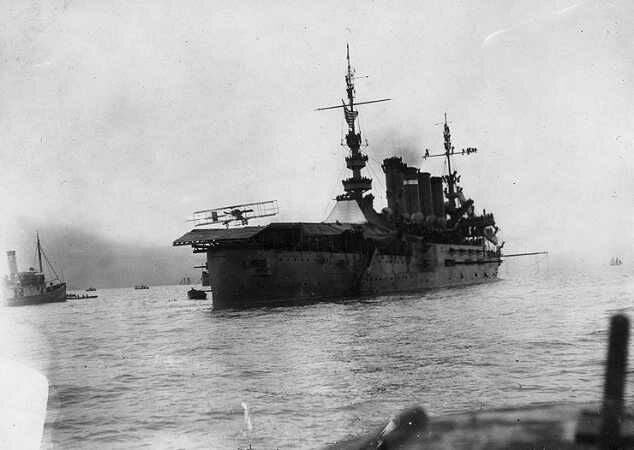All of the most powerful navies in the world maintain their superiority using aircraft carriers. These rare beasts are extremely expensive and not every country with a fleet is able to afford them. They can cost several billion dollars each, but the value they provide is immense with them. A navy is able to project power far beyond a country's borders.
Any major conflict between the world's superpowers is certain to involve these magnificent machines. They really are fascinating pieces of engineering. Just how fascinating? Without further ado, here are things you never knew about aircraft carriers.
The pride of the American fleet, the most sophisticated warship ever built. Equipped with the most devastating firepower, The USS NIMITZ, the world's biggest aircraft carrier. She owns her success to a century of innovation in shipbuilding.
The NIMITZ can cruise at over 55km an hour, sail for 20yrs without refueling, can carry over 90 aircraft and houses 6,000 men and women. She can detect threats at 500km away and launch a supersonic fighter jet every 20second to intercept them. She's a masterpiece of military engineering.
Nimitz class.
Any major conflict between the world's superpowers is certain to involve these magnificent machines. They really are fascinating pieces of engineering. Just how fascinating? Without further ado, here are things you never knew about aircraft carriers.
- Cost: $4.5Billion.
- Overall length: 1,092 ft (333 m).
- Weight: 99,000 tons.
The pride of the American fleet, the most sophisticated warship ever built. Equipped with the most devastating firepower, The USS NIMITZ, the world's biggest aircraft carrier. She owns her success to a century of innovation in shipbuilding.
The NIMITZ can cruise at over 55km an hour, sail for 20yrs without refueling, can carry over 90 aircraft and houses 6,000 men and women. She can detect threats at 500km away and launch a supersonic fighter jet every 20second to intercept them. She's a masterpiece of military engineering.
Nimitz class.
- There have been seven key stages in the development of aircraft Carrier designs and seven key carriers. At the heart of each vessel lies a major technological advance that allows them to increase in size.
- Since it's impossible to take off on the short runway of an aircraft carrier conventionally, four catapults are used to give planes an extra boost or slingshot the plane, giving it the boost of speed needed to get airborne before it hit the ocean. These catapults have two pistons that sit inside parallel cylinders that are positioned under the deck. These pistons are roughly 100 yards in length. Taking off from an aircraft carrier, pilots say, is like getting a punch in the face. The combination of the catapults and the planes afterburners get the plane to go from 0 to almost 300 km/h in just 2seconds.
- Even on the largest carriers, planes only have a 500-foot runway to work with. A pilot needs to snag his plane's tailhook to one of the four arresting wires that are made from high tensile steel. These wires can stop a 54,000-pound aircraft going at 240 km/h in two seconds, within 315 feet.
- Landing aircraft on Carrier decks at night, in storms, the rough sea is scary and is one of the most difficult tasks for military pilots. Landing on a moving carrier in perfect conditions is difficult enough; however, landing on a carrier deck at night, in rough seas with the deck pitching and rolling all over the place is the scariest experience they've ever had.
- These huge machines have up to seven decks stacked under the flight deck and a massive superstructure. This is required to house a crew of around 5000 technicians, pilots, and sailors.
- Gigantic lifts bring aircraft to and from the flight deck from hangars. Belowdecks, you'll find workshops, mess halls, crew quarters and everything else needed to keep this mini-city afloat and operationally ready
- India is one of nine countries that have aircraft carriers in active service. The INS Viraat is 226.5 meters long and can carry up to 30 aircraft while coasting at speeds of 28 knots. It was acquired by the Indian navy in 1987. The Viraat gives India a huge advantage over Pakistan's Navy, as it can launch aircraft deep into Pakistani territory if needed. Soon the Indian Navy will be armed with the Russian-made INS Vikramaditya and locally-manufactured Vikrant-class aircraft carriers as well.
- During WWII, the Japanese navy had submersible aircraft carriers. These carriers were able to carry three aircraft underwater to their destinations, resurface, launch their planes and quickly dive again before they were discovered.
- One US aircraft carrier has a more powerful air force than 70% of all countries.
- In 1929, an aircraft carrier (USS Lexington CV-2), helped power the city of Tacoma, WA for a month
- The first successful aircraft landing on a ship was made in 1911
- An aircraft carrier flight deck is one of the most exhilarating and dangerous work environments in the world (not to mention one of the loudest). The deck may look like an ordinary land runway, but it works very differently, due to its smaller size. When the crew is in full swing, planes are landing and taking off at a furious rate in a limited space. One careless moment and a fighter jet engine could suck somebody in or blast somebody off the edge of the deck into the ocean. But as dangerous as the flight deck is for the deck crew, they have it pretty easy compared to the pilots. The flight deck isn't nearly long enough for most military planes to make ordinary landings or takeoffs, so they have to head out and come in with some extraordinary machine assistance.
- Flight deck personnel, wearing different colored shirts in order to distinguish their tasks.

















Trending
Some Fascinating Facts About Military Aircraft Carriers.